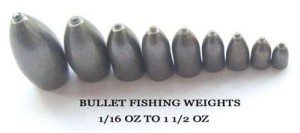 A little play on words, but it got your attention.
A little play on words, but it got your attention.
Like many things in life, size matters. However, when it comes to lead based paint (LBP) hazards … a smaller size is more impressive and more damaging.
To illustrate this point, take a 1/16 ounce small lead fishing weight. Pop it in your mouth and within 24 hours, you can probably pass it out the other end. The stomach acids probably did dissolve it a little bit, but not visually noticeable. You may have increased your lead blood lead levels, but once again, not visually noticeable. Not that big of deal.
However, take that same 1/16 ounce small lead fishing weight and sand it down into a fine dust. If you were to swallow it, most likely you wouldn’t be alive by the time the ambulance arrived.
Other Variables Matter
How dangerous lead dust can be, depends on several factors.
- How much you weigh?
- When is the last time you ate?
- What you ate?
- Did you breathe it in or swallow?
- How old you are.
- Where you live.
- And many more variables.
Another key factor is the lead content in the paint. LBP is defined as being ½% by weight or greater. On average, homes built between 1950 and 1977 contain around ½% or slightly more. Homes built 1930 to 1949 can contain up to 25% lead content. Homes built before 1930 can often have lead content of 50% by weight. Amazingly, there has been some paint that measured 80% by weight. Very rare, but it can be found.
So, if you’re a adult who had a big breakfast, working in the South on a 1977 home and just repairing some minor cracks … you may not have much to worry about. However, if you are a young adult, sanding trim in a 1901 home, without a dust mask and your last meal was several bottles of beer the night before … you should worry.
